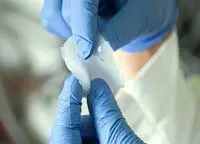 The US Army Research Laboratory (ARL), working with the University of Maryland, has developed a lithium-ion battery that uses a water-salt solution as its electrolyte and says it could be commercialised within five years.
The US Army Research Laboratory (ARL), working with the University of Maryland, has developed a lithium-ion battery that uses a water-salt solution as its electrolyte and says it could be commercialised within five years.
According to the team, its battery provides 4V without the risks associated with non-aqueous lithium-ion batteries. Dr Kang Xu, an ARL fellow, noted: “In the past, if you wanted high energy, you would choose a non-aqueous lithium-ion battery, but would have to compromise on safety. If you preferred safety, you could use an aqueous battery such as nickel/metal hydride, but you would have to settle for lower energy. Now, we are showing that you can have access to high energy and high safety.”
The work builds on previous research which developed a similar 3V battery with an aqueous electrolyte. The leap from 3V to 4V, was enabled by University of Maryland (U of M) researcher Chongyin Yang, who designed a gel polymer electrolyte coating that can be applied to the graphite or lithium anode.
This hydrophobic coating expels water from the vicinity of the electrode surface and then, upon charging for the first time, decomposes and forms a stable interphase that separates the solid anode from the liquid electrolyte. This allows desirable materials, such as graphite or lithium metal, to be used, while bringing better energy density and cycling ability.
The team says that, although the power and energy density of its new battery are suitable for commercial applications, improvements would make it even more competitive. In particular, the researchers are looking to increase the number of full-performance cycles the battery can complete and to reduce material expenses. “Right now, we are talking about 50 to 100 cycles,” said U of M’s Professor Chunsheng Wang, “but to compare with organic electrolyte batteries, we want to get to 500 or more.”
Dr Xu pointed to the importance of what he called ‘electrochemical manipulations’ in battery technology. “This is the first time that we have been able to stabilise really reactive anodes like graphite and lithium in aqueous media. This opens a broad window into many different topics in electrochemistry, including sodium-ion and lithium-sulphur batteries, multiple ion chemistries involving zinc and magnesium, or even electroplating and electrochemical synthesis; we just have not fully explored them yet.”
Author
Graham Pitcher
Source: www.newelectronics.co.uk

